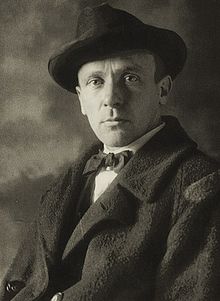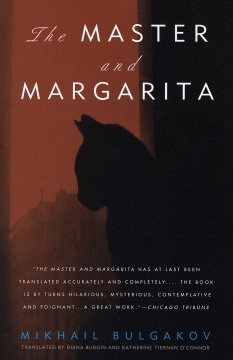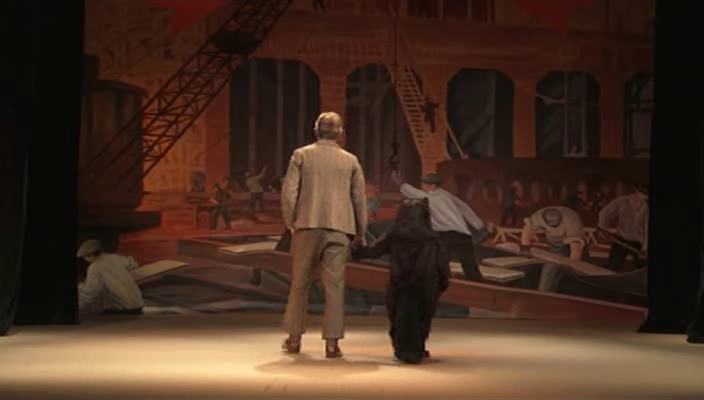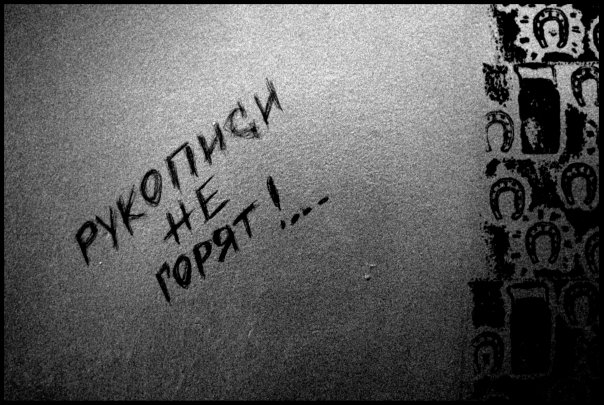This week, The Guardian published an article reporting that the city of Moscow had finally (finally) approved a monument to one of it’s most under-appreciated, and controversial, authors: the great Mikhail Bulgakov.

Bulgakov was born on May 15, 1891 in Kiev (then part of the Russian Empire, now the capital of Ukraine), and originally trained to be a doctor, a job he performed well until he nearly died of typhus was working as an army doctor during the Russian Civil War.
 Following Stalin’s rise to power, Bulgakov was living in Moscow, eking out a living as a playwright. Though he always favored science fiction, and tended toward the weird in his writing, he was also a ruthless satirist, which earned him a good deal of criticism, including from Stalin himself, who alternatively condemned Bulgakov’s work and praised it. Truthfully, this wasn’t an uncommon tactic–Stalin may have been brutal and ruthless, but he was also demoniacally clever, and delighted in keeping those under his thumb guessing, often for years on end.
Following Stalin’s rise to power, Bulgakov was living in Moscow, eking out a living as a playwright. Though he always favored science fiction, and tended toward the weird in his writing, he was also a ruthless satirist, which earned him a good deal of criticism, including from Stalin himself, who alternatively condemned Bulgakov’s work and praised it. Truthfully, this wasn’t an uncommon tactic–Stalin may have been brutal and ruthless, but he was also demoniacally clever, and delighted in keeping those under his thumb guessing, often for years on end.
Stalin’s intervention meant that nothing Bulgakov wrote would ever be published or performed for the rest of his life. Haunted and heartbroken, Bulgakov began writing the book that would make him immortal. Inspired by his third wife, Yelena Shilovskaya, he began penning The Master and Margarita, a book about the arrival of the Devil in Moscow.
 It is physically impossible to sum up this book properly in this space, but, essentially, there are two plotlines–one is the story of the Master, a writer who, after composing a novel about the interrogation of Christ by Pontius Pilate, casts his book into the stove and is eventually incarcerated in a lunatic asylum. His beloved, Margarita, decides to risk everything–life, limb, and soul–in a conspiracy with the Devil and his enormous talking cat, Behemoth. The second plotline is that of the Master’s book, which features Christ and Pilate locked in an eternal struggle over truth.
It is physically impossible to sum up this book properly in this space, but, essentially, there are two plotlines–one is the story of the Master, a writer who, after composing a novel about the interrogation of Christ by Pontius Pilate, casts his book into the stove and is eventually incarcerated in a lunatic asylum. His beloved, Margarita, decides to risk everything–life, limb, and soul–in a conspiracy with the Devil and his enormous talking cat, Behemoth. The second plotline is that of the Master’s book, which features Christ and Pilate locked in an eternal struggle over truth.
Every scene in the book is a thinly veiled critique of Stalin’s purges, described in a way that brings out the real, personal, emotional agony of this time, and emphasizing the near inhuman courage it took simply to get up and live your life everyday. Indeed, the Devil (who, in this book, goes by the name of Woland) isn’t the villain of this piece. His justice is perverted to be sure, but even he bewildered by the petty, inane levels of evil that persists in Moscow everywhere he looks. Though his meddling brings total chaos to the city, it also brings retribution is some of the most satisfying, heart-rending, and blood-chilling scenes you’ll read.
![[One of the sketches for an unrealised animated feature based on Bulgakov’s novel by Sergei Alimov]](http://www.peabodylibrary.org/freeforall/wp-content/uploads/2015/11/07.jpg)
When Bulgakov read the manuscript to his closest friends, they knew that even hinting about it to anyone in authority would get him killed. As a result, he hid it in his desk, editing it whenever an idea struck, until his death in 1940 of hereditary kidney disease (by which time, he had been working on the book for twelve years). It would remain unpublished for over 25 years, and even then, Bulgakov’s wife (the model for Margarita) wasn’t sure which edits were the ones Bulgakov wanted. As a result, both editions were printed, leading to any number of complications between people who decide to read the book. It wasn’t until 1973 that the book appeared in Russia, and it was only added to school curriculums in the late 1990’s.
There have been attempts to get a monument to Bulgakov around Patriarch’s Pond (near his house, and also a crucially important setting for Master and Margarita) for years and years. But Nikolai Golubev, the artist commissioned to create the memorial wants to include characters from the book in his art. “Life is short, art is long, Golubev is quoted as saying, “Bulgakov didn’t have children, his children are his books. We want to put up a monument to these works, which will outlast me and you.”
….And no one wants to put a statue of the Devil in Moscow.

Nor do they want a state of the primus stove, into which the Master threw his manuscript in a fit of despair. In an open letter to the author, this element was called “a symbol of devildom”…but the truth is, that is perhaps the most hopeful aspect of Bulgakov’s book. Because, as Woland reminds us “manuscripts don’t burn”. No matter how hard we humans try to quash each other’s voices, no matter how brutal is the world in which we live, Bulgakov’s book is a reminder that ideas live a life of their own, and that they endure long after we are dust…or statues. And even if, for now, Bulgakov’s memorial is only a likeness of the man himself, seated on a broken bench, it is a start. “Everything passes away,” Bulgakov wrote early in his career, “suffering,pain, blood, hunger,pestilence. The sword will pass away too, but the stars will remain when the shadows of our presence and our deeds have vanished from the Earth. There is no man who does not know that. Why, then, will we not turn our eyes toward the stars? Why?”


As a Russian from Soviet times, I can tell you that the book is far less of a critique of Stalin then you think, in fact Stalin loved Bulgakov and often patronised his plays. It is in fact a critique of the Soviet society of the 30s which was portrayed as hypocritical and bureaucratic. It is not about anger, it is a satire which is leisurely poking fun at Soviet people.